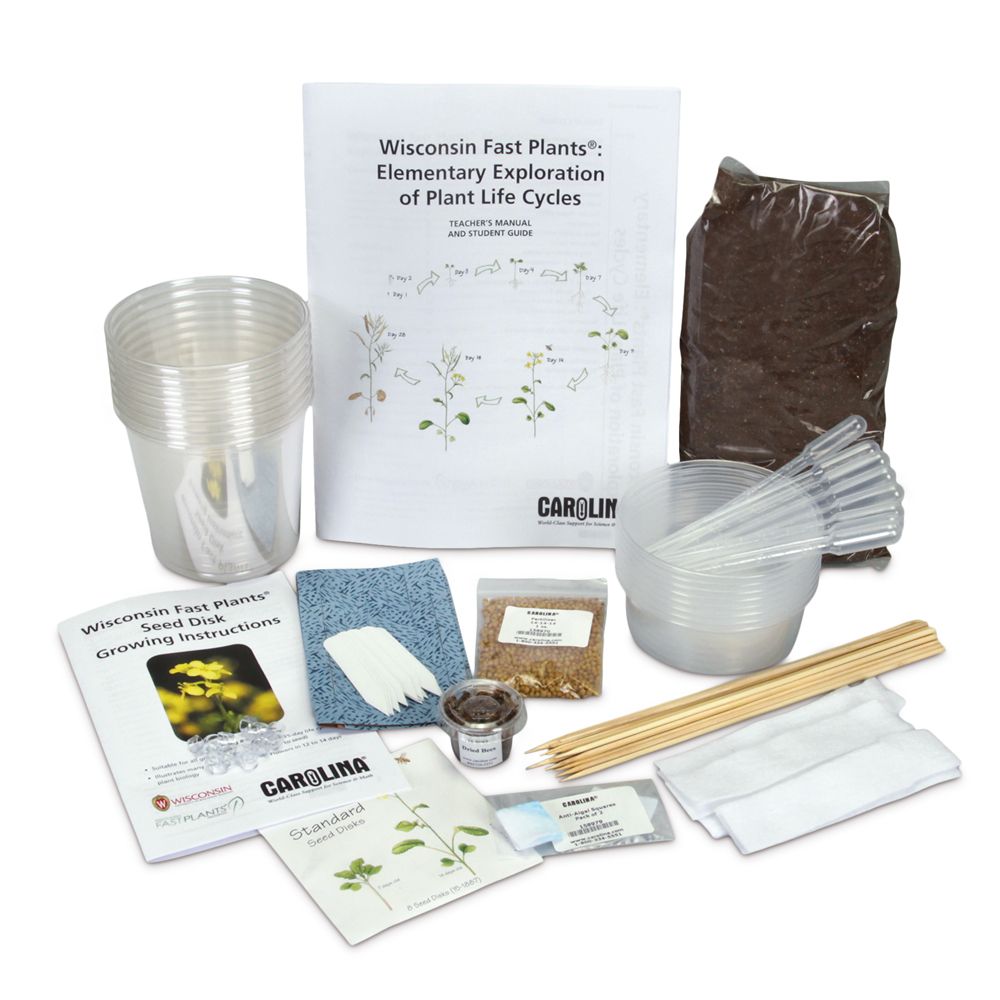Comparing Land and Water Plants
A Carolina EssentialsTM Activity

Total Time: 60-75 mins
Prep: 15 mins | Activity: 45-60 mins

Life Science
2
Elementary School
- Total Time: 60-75 minutes [ Prep: 15 mins | Activity: 45-60 mins ]
- Subject: Life Science
- Grade: Elementary School
Overview
This exploratory activity examines the phenomena of plant structure. Regardless of habitat, all plants have distinguishing structures with predictable functions. In this activity, students compare an aquatic plant, common duckweed, to a terrestrial plant of their choosing. Students are guided to examine leaves, stems, and roots and make a summary statement about how adaptations can be beneficial to a plant in different habitats.
Essential Question
How are land and aquatic plants different? How are they alike?
Activity Objectives
- Describe how plants change to live in different habitats.
Next Generation Science Standards* (NGSS)
PE-2-LS4-1 Make observations of plants and animals to compare the diversity of life in different habitats.
SCIENCE & ENGINEERING PRACTICES
Planning and Carrying Out Investigations
- Make observations (firsthand or from media) to collect data which can be used to make comparisons.
DISCIPLINARY CORE IDEA
LS4.D Biodiversity and Humans
- There are many different kinds of living things in any area, and they exist in different places on land and in water.
CROSSCUTTING CONCEPTS
Patterns
- Scientists look for patterns and order when making observations about the world.
Materials
Safety & Disposal
Prior to taking students outside, locate an area where they can easily dig up a weed or small plant without harming school landscaped areas. Ensure that the terrestrial plants have roots, stems, and leaves after students dig them up. If the school grounds are not appropriate for plant samples, purchased plants like coleus, marigolds, and pansies work well.
To dispose of duckweed, place it in a resealable bag, freeze it for several days, and then dispose of the bag in the classroom trash. Do not dump duckweed into a body of water.
Procedures
Berlese Funnel Construction
- 1. Precut the screen into 20 cm × 20 cm pieces.
- 2. Identify different locations outside that are suitable for invertebrate collection.
STUDENT PROCEDURES
- Cover the desk with paper or newsprint.
- Put both plants on the paper, 4 to 6 inches apart.
- Trace around both plants.
- Look at both plants with the magnifying glass.
- Fill in the data table.
TEACHER PREPARATION AND TIPS
- Have students remove soil from the plant roots before beginning.
- Encourage students to write their observations on the paper.
- Emphasize the difference in overall shape between the plants.
- Emphasize form and function.
| Land Plant | Aquatic Plant | |
|---|---|---|
| Shape of leaf | Will vary | Oval and thick or spongy |
| Number of leaves | Will vary | Probably 2 or 4 |
| Color of leaves | Green | Green |
| Where roots are attached | Will vary | One per leaf |
| Number of roots | Will vary | One per leaf |
| Color of roots | White to cream | White to cream |
| Shape of stem | Will vary | No stem visible |
| How leaves are attached to stem | Attached by another short stem, the petiole | N/A |
| Color of stem | May vary, usually green | N/A |
| Shape of plant | Taller than broad | Broader than tall |
| Other observations | Will vary–students should note leaf veins | Will vary |
Analysis & Discussion
How are land plants and aquatic plants similar?
Answers will vary, but key points should include that they are both green and have leaves and roots. Both types of plants do produce flowers.
How are land plants and aquatic plants different?
Land plants have stems and a branched root system. Land plants are taller than they are wide. Aquatic plants have roots that hang into water. Each leaf has its own root. The leaves are thicker and somewhat spongy. There is no visible stem on the duckweed.
What makes land plants better able to live on land?
Branched roots hold the land plant in place and extend outward for water. Stems allow for more leaves, resulting in more photosynthesis and food for the plant. Broader and bigger leaves also allow for more photosynthesis.
What makes water plants better able to live in water?
Spongy leaves allow the aquatic plant to float on the surface of the water. Leaves are broad and flat so the plant can float. Aquatic plants don’t have to stay in place. Roots hang directly into water so they don’t have to branch.
SHOP THE KIT
REFERENCE KITS
HELPFUL LINKS
VIEW MORE ESSENTIALS
*Next Generation Science Standards® is a registered trademark of Achieve. Neither Achieve nor the lead states and partners that developed the Next Generation Science Standards were involved in the production of, and do not endorse, these products.




